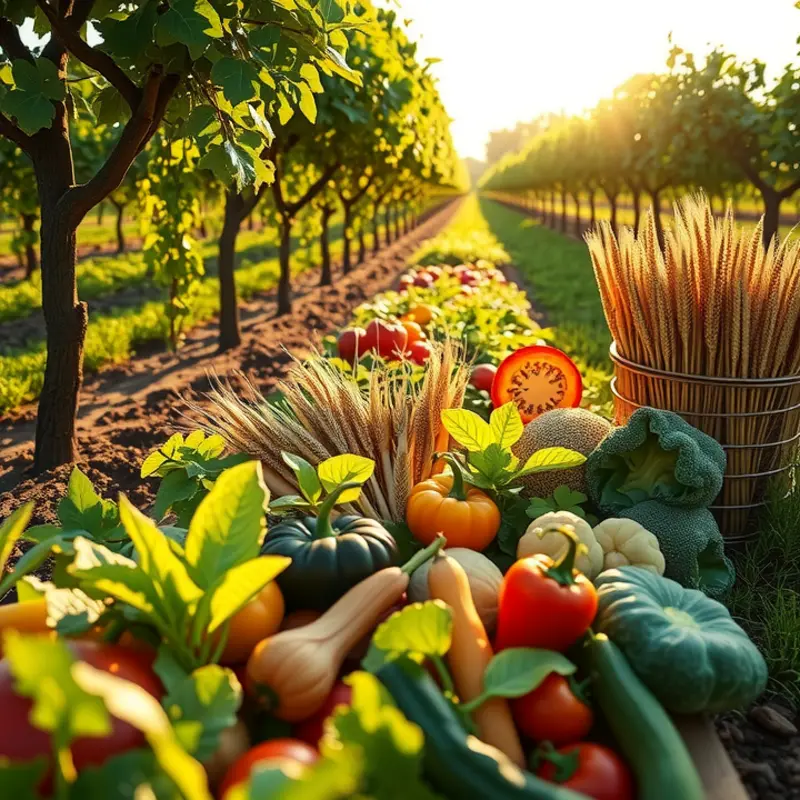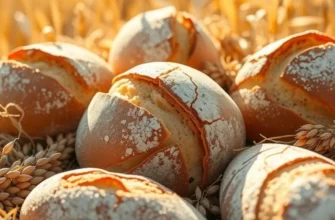Efficient meal prepping can transform how busy individuals and families approach their weekly meals. By focusing on grains, a versatile and nutritious staple, you can save time, reduce stress, and create balanced meals with ease. This guide provides you with practical strategies to integrate efficient grain prep into your routine, helping you flourish in the kitchen while accommodating your hectic schedule.
Mastering the Basics of Grain Cooking

Cooking grains can transform a simple meal into a delightful and nutritious feast. Grains like rice, quinoa, and farro provide variety and depth to meals while being staples in many households. Knowing the basics of cooking these grains efficiently can save time and enhance your family’s dining experience.
Rice: Rice is a versatile and widely used grain. The most common types are white and brown rice. Each has a distinct texture and cooking time. For white rice, the general water ratio is 1:2, one cup of rice to two cups of water. Boil the water, add a pinch of salt, then pour in the rice. Reduce the heat to low, cover, and let simmer for about 18 minutes. Let it rest with the lid on for an additional 5 minutes after removing it from heat. Brown rice has a nutty flavor and requires more time, approximately 45 minutes, with the same water ratio. It’s important to let brown rice rest for 10 minutes before serving to allow the steam to redistribute the moisture evenly.
Quinoa: Known for its high protein content, quinoa is a family-friendly grain. Rinse it under cold water to remove its natural coating, which can be bitter. Use a 1:2 water ratio—one cup of quinoa to two cups of water. Bring it to a boil, cover, and reduce the heat to a low simmer for about 15 minutes. Once done, let it sit covered for 5 minutes. Fluffing it with a fork before serving helps achieve that light, airy texture.
Farro: This ancient grain is gaining popularity for its chewy texture and nutty flavor. Unlike rice, farro can be cooked using two methods: the absorption method or the pasta method. For the absorption method, use a 1:3 ratio—one cup of farro to three cups of water or broth. Simmer on low heat for 30 minutes or until tender. For the pasta method, use a generous amount of water or broth, about four cups for one cup of farro. Cook until tender, approximately 25 minutes, and drain the excess liquid. This method tends to intensify farro’s flavor and maintain its texture.
Tools: Investing in a good quality, heavy-bottomed pot with a tight-fitting lid can significantly improve the cooking process. It ensures even heat distribution and reduces the risk of burning or uneven cooking. A fine mesh sieve is perfect for rinsing smaller grains like quinoa thoroughly.
Incorporating these grains into your meal planning can be both time-efficient and rewarding. Their versatility allows them to pair well with a variety of dishes, providing nutritional benefits with minimal effort. For more ideas on integrating grains into quick dinners, explore minimal prep dinner ideas. As you master these basic techniques, you’ll find that preparing healthy, substantial meals for your family becomes second nature.
Integrating Grains into Your Weekly Meal Plan

Incorporating grains into your weekly meal plan can transform your family’s meal routine into a dynamic culinary experience. Prepping grains in advance not only saves time but also enhances the nutritional value of your meals. Begin by selecting a variety of grains like quinoa, brown rice, bulgur, and barley. These options provide diverse textures and nutrients, each offering unique benefits.
Storage Tips
To ensure longevity and safety, store cooked grains in airtight containers and refrigerate. They typically last 4-6 days in the fridge. Consider freezing portions in silicone molds for longer storage and easy defrosting. Defrosting a single portion for lunch or dinner is a great time-saver.
Creative Meal Ideas
Grain bowls are a versatile meal option, perfect for using prepped grains. Combine quinoa with black beans, avocado, and salsa for a zesty Mexican-inspired meal. Alternatively, brown rice pairs wonderfully with sautéed vegetables and a splash of soy sauce, creating a simple Asian stir-fry.
For breakfast, cooked grains can be repurposed into hearty porridge. Add fruits like banana or berries for natural sweetness and a sprinkle of cinnamon for warmth. Mixing grains into pancake or waffle batter also introduces an interesting texture and added nutrients.
Meal Combinations
Explore using grains as a base for salads. A barley salad with cherry tomatoes, cucumbers, and feta cheese is a refreshing lunch option. Top with a drizzle of olive oil and fresh lemon juice for a tangy finish.
Dinner time can be streamlined by creating a one-pot meal. Try cooking grains alongside chicken broth and vegetables, forming a comforting dish that can be modified with available ingredients. These meals not only minimize cleanup but also infuse grains with rich flavors during cooking.
Boosting Nutrition
Integrating grains into meals is an excellent strategy to enhance family nutrition. Whole grains are rich in fiber, essential for maintaining digestive health. They also provide a steady energy release, perfect for keeping everyone fueled throughout the day. More details about maintaining nutritional adequacy can be found in our guide on nutritional basics.
By integrating grains into various meals and utilizing effective storage methods, you ensure your family enjoys diverse and balanced diets. Embrace creativity and flexibility in meal planning to fully utilize the benefits of prepped grains.
Final words
Prepping grains efficiently not only simplifies your cooking routine but also enhances your family’s overall nutrition. By mastering the cooking basics and integrating grains strategically into your meal planning, you create a well-rounded approach to your weekly menus. Armed with these practical strategies, you can enjoy delicious meals without the stress, leaving you more time to focus on what truly matters. Embrace these techniques today, and watch your meal prep game elevate!







